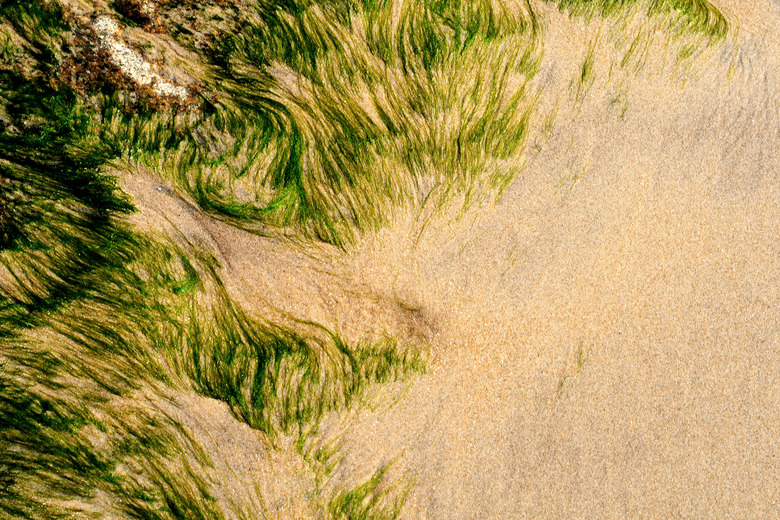Harmful Effects Of Algae
An immense variety of algae species exists in both freshwater and saltwater habitats. In fact, one study estimates that there are over 72,000 different species of algae. Algae provides animals with important habitats and food. However, when ecosystems are impacted by pollution, climate change or other drastic alterations, the negative effects of algae can be devastating.
Harmful Algal Blooms
Harmful Algal Blooms
Researchers call an overgrowth of algae that negatively impacts the ecosystem a harmful algal bloom. Harmful algal blooms, or HABs, occur when a naturally occurring algae grows out of control. A red tide is an example of a harmful algal bloom of a specific algae species. The causes of these blooms – and the impacts on the ecosystem – can vary from one case to the next.
One of the more polarizing impacts of harmful algal blooms is the dead zones that they can create. The algae population explodes, grows over the surface of the water, blocks the sunlight to aquatic plants, consumes all the nutrients available and then dies. The decomposing algae pulls all of the oxygen from the water, killing essentially everything living in that ecosystem – hence the term dead zone.
What Causes Algal Blooms?
What Causes Algal Blooms?
Increasing water temperatures from climate change have resulted in increased negative effects of algae. Algae loves warm-water habitats, and when water heats up, the algae reproduces rapidly in response. Hurricanes and other natural disasters can also increase algal blooms, and the rates of these natural disturbances have increased due to climate change.
Another common cause of HABs is fertilizer runoff. When people use fertilizer on their lawns, rain washes that fertilizer to the waterways. In addition to providing nutrients for the intended ornamental plants, it also provides nutrients to the algae. The algae then quickly multiply and proliferate in response to the newly available phosphorous and nitrogen from the fertilizer. After consuming all the nutrients, the algae dies and leads to the formation of a dead zone.
Negative Effects of Algae on Animals
Negative Effects of Algae on Animals
In addition to the impact on fish from dead zones, algal blooms can impact animals in other ways as well. Many fish feed on the algae, and in large amounts certain algae species can produce toxic effects.
A single fish eating a small amount of algae might not feel much of an impact individually. However, a sea lion might eat that small fish and 50 other small fish who also fed on the toxic algae. The sea lion's body cannot process the algae, and it accumulates in the sea lion's system in a process known as bioaccumulation. Bioaccumulation impacts a wide range of predatory species.
Bioaccumulation can cause any number of negative side effects to the impacted animal, and can even be fatal. The sea lion in this example makes a great model of this. Sea lion populations commonly face domoic acid poisoning from this exact scenario. Following harmful algal blooms, the marine mammals often come into rehabilitation facilities with symptoms of neurological damage, vomiting and seizures. The poisoning can result in termination of pregnancy and death.
Negative Effects of Algae on Humans
Negative Effects of Algae on Humans
Aquatic predators aren't the only ones impacted by the negative effects of algae. Algal blooms also impact humans in a number of different ways. Dead zones created by algal blooms create rather distasteful smells during the decomposition process, impacting tourism to lakes and beaches. Additionally, humans can also suffer from poisoning due to bioaccumulation.
Fish and shellfish in regions impacted by algal blooms cannot be used for human consumption and this can have catastrophic results for fishermen in the region. For example, the National Oceanic and Atmospheric Administration estimates that following red tides in 2011, oyster fishermen in Texas lost a total of over $10 million worth of oysters.
Investigating the causes and mitigating the impacts of these HABs is important to the ecosystem, the economy and the overall health of the surrounding regions.
Cite This Article
MLA
Zinni, Yasmin. "Harmful Effects Of Algae" sciencing.com, https://www.sciencing.com/harmful-effects-algae-7610474/. 30 September 2021.
APA
Zinni, Yasmin. (2021, September 30). Harmful Effects Of Algae. sciencing.com. Retrieved from https://www.sciencing.com/harmful-effects-algae-7610474/
Chicago
Zinni, Yasmin. Harmful Effects Of Algae last modified August 30, 2022. https://www.sciencing.com/harmful-effects-algae-7610474/
